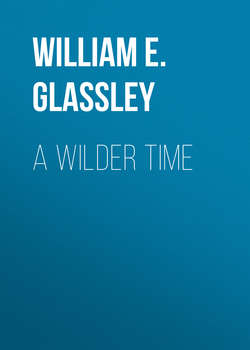Читать книгу A Wilder Time - William E. Glassley - Страница 15
На сайте Литреса книга снята с продажи.
ОглавлениеIntroduction
ONE OF THE MOST EXTENSIVE, continuous wilderness regions on Earth, Greenland remains largely submerged by ice. In the area not ice-covered, the landscape materializes as experience, not place. Boundaries, whether real or imagined, named or anonymous, dissolve into opportunities. Senses become remarkably acute, sharpened by the raw purity of what it means to be wild. Greenland is a place of surfaces so rich with history that simply setting foot on them seems to clarify reality.
The objective meaning of Greenland, expressed as simple facts, deserves consideration. That land of rock-fringed ice, if laid onto western North America, would extend beyond the northern and southern borders of the United States, and stretch from San Francisco nearly to Denver. More than 80 percent is buried under the only permanent ice sheet in the northern hemisphere. At its thickest, the ice is more than ten thousand feet deep and holds more than 10 percent of the world’s freshwater. The summit of the ice cap is over twelve thousand feet above sea level.
More than half of Greenland extends above the Arctic Circle. It was the last settled major landmass on the planet, its first population reaching it about 4,500 years ago. It holds the distinction of being the least-populated region in the world, and is the only nation listed in the World Bank database with a value of zero people per square kilometer (the database presents all statistics as whole numbers). That same metric for the United States is 35 people per square kilometer; for the United Kingdom it is 265. Most of its fewer than sixty thousand permanent residents identify as members of the Inuit culture. The largest town is Nuuk, with 16,500 people. There are only seventy-eight towns, villages, communities, and settlements on the entire island. A number of them have fewer than fifty inhabitants. The Inuit culture identifies their country as Kalaallit Nunaat.
Greenland’s culture is steeped in its fishing and hunting traditions, sustainably practiced for hundreds of years. Seal and reindeer are essential staples, providing nourishment and materials for clothing and limited commerce, the hunting done by individuals as part of a subsistence lifestyle. The art, photography, literature, and inherited myths of its indigenous Inuit peoples quietly offer perspective on their home and traditional practices. But in the absence of any significant capitalized trade, few nonnative people have access to it, or can see how it is changing.
The ripple effect of distant decisions made by countries navigating the complex interactions of economics, morality, and the wild world extends even to a place as remote as Greenland. In 1983, in reaction to the attention given to the brutal commercial harvesting of baby seals in Canada, a ban on sealskin trading was imposed by the European Economic Community, followed in 2009 by a European Union ban on trade in seal products. The consequences were far-reaching, some of which were unintended. A loss of income from the sale of sealskins and other products devastated Greenland’s Inuit hunting culture. The extinction of the seal market diminished seal hunting, causing an explosive growth in seal populations. With a rapid expansion in the number of fish predators, fish populations consequently declined, impacting that component of their subsistence lifestyle, as well. Even with very recent modifications to the ban—those allowing Inuit cultures to pursue sustainable seal harvesting—the impact on income has been significant. Today, about 60 percent of Greenland’s economy is supported by an annual block grant from the Kingdom of Denmark, of which it is an independent member. Greenland remains a country struggling to return to a sustainable existence, but now with the added complexity of a rapidly changing climate, the challenge is formidable.
WHAT FOLLOWS ARE MY EXPERIENCES of Greenland’s surfaces from six expeditions. The story unfolds in three parts, each part containing the suite of formative sensory experiences that shifted my perception. “Fractionation” documents the deconstruction of expectations, relating experiences that exposed the depth of my ignorance about knowing place. “Consolidation” describes the process of coming to terms with the reality that, as a product of organic and physical evolution, my ignorance is an integral part of being aware. “Emergence” derives from small epiphanies about our place in existence, what we can know of the world and what we cannot.
That we have a place in this world implies responsibilities, but it does not signify meaning. The majestic power of wilderness is its ability to convey that seeming contradiction through the overwhelming beauty of evolution’s carelessness. That we have an impact on its unfolding is revealed in the reconstruction wilderness imposes upon itself when confronted by changes in climate that mankind has induced and to which wilderness must respond.
The book is not chronological. Experiences that change perception accumulate in odd ways that are personal and often not initially understood. The reconstruction of a new way of seeing is piecemeal. Each insight or shifted perception fills a space in a timeless tapestry that will never be completed.
Wilderness speaks with unmitigated honesty. Every belief and imagining that we bring with us as we enter such spaces also reflect back to us, but in a form that can be difficult to recognize. My hope in writing this book is that the value of truly pristine wilderness, as a place from which to sense how we each fit within the grand unfolding universe, will inspire its preservation. If we lose wilderness, finding our roots, personally and as a species, will be virtually impossible.
